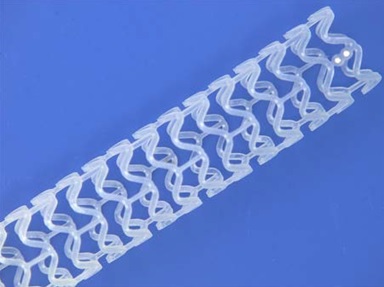
Furthermore, although the population was complex and non-selected, no cases of early thrombosis were reported.
This study enrolled 249 patients as part of the BVS Expand registry. Only 5 patients, in whom device implantation was rendered impossible, were excluded from the analysis.
After a year, 5.1% of the population suffered from cardiac mortality, myocardial infarction, and/or target lesion revascularization, major adverse cardiac events (MACE).
Using Kaplan-Meier estimates, the MACE rate at 18 months was 6.8%, with myocardial infarction as the most common event.
Considering MACE components separately, the rates of cardiac mortality, myocardial infarction and target lesion revascularization were 1.8%, 5.2%, and 4.0%, respectively.
The definite scaffold thrombosis rate was 1.9%; no cases of acute, sub-acute or late thrombosis were observed.
The univariate analysis lacked the statistical power to show significant thrombosis predictors, but a certain trend was observed for some variables such as age, long lesions, calcified lesions, and small vessels (reference diameter <2.5 mm).
These findings would support the use of Absorb in complex anatomies; however, the fact that, in 39% of patients, intravascular ultrasound (IVUS) and optical coherence tomography (OCT) were used for the optimization of device implantation should be taken into account.
Conclusion
The everolimus-eluting bioresorbable scaffold (Absorb) showed acceptable long-term performance, even while being assessed on a population presenting complex lesions. No cases of acute or sub-acute thrombosis were observed.
Editorial
Several previous works have warned about the need of a thorough implantation protocol for these new devices.
In this study, the strategy always included predilatation, the implantation of a device whose diameter matched that of the reference vessel, and postdilatation. The avoidance of small vessels and ostial lesions was also recommended. Taking all these precautions, a significant reduction of the scaffold thrombosis rate, from 3% to 1% annual, is possible.
The unique advantages of a bioresorbable scaffold are likely to appear once the device has been fully resorbed; their observation would require a follow-up of at least 36 months, instead of just 18.
Original title: Mid- to long-term clinical outcomes of patients treated with the everolimus-eluting bioresorbable vascular scaffold: the BVS Expand registry.
Reference: Felix CM et al. J Am Coll Cardiol Intv. 2016; Epub ahead of print.
We are interested in your opinion. Please, leave your comments, thoughts, questions, etc., below. They will be most welcome.





